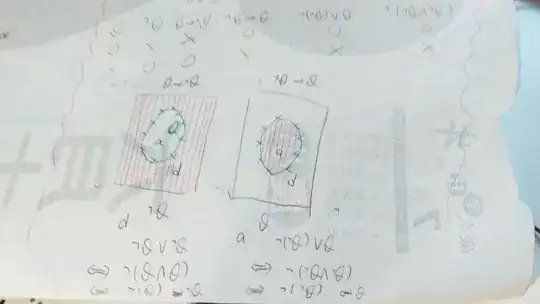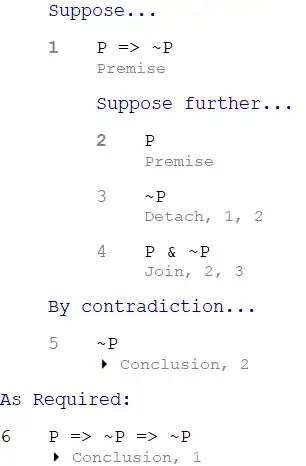Personally I like to think of $P \to Q$ as a "promise" or "contract":
I promise if $P$, then $Q$
So if I say:
I promise if "bob dies", then "I pay \$100"
- If bob dies ($P=T$), and don't pay \$100 ($Q=F$), I've broken my promise ($F$).
- If bob dies ($P=T$), and I pay \$100 ($Q=T$), I've kept my promise ($T$).
- If bob is alive ($P=F$), and I pay \$100 ($Q=F$), I've kept my promise ($T$).
- Just because I paid you \$100, doesn't mean bobs dead.
- If bob is alive ($P=F$), and I don't pay \$100 ($Q=F$), I've kept my promise ($T$).
For $\lnot P \to P$
Your statement $\lnot P \to P$ can be interpreted as:
I promise if "I haven't paid \$100", then "I've paid \$100"
- If haven't paid \$100 ($P=F$), then I've broken the promise ($\lnot P \to P = F$).
- If I've paid \$100 ($P=T$), then I've kept the promise ($\lnot P \to P = T$)
From this we can deduce, the promise is broken only when I don't pay \$100. Or in other words it's all based on whether I've paid \$100 ($P$). Symbolically: $\lnot P \to P = P$
For $P \to \lnot P$
The statement $P \to \lnot P$ can be interpreted as:
I promise if "I have paid \$100", then "I haven't paid \$100"
- If haven't paid \$100 ($P=F$), then I've kept the promise ($\lnot P \to P = T$).
- If I've paid \$100 ($P=T$), then I've broken the promise ($\lnot P \to P = F$)
From this we can deduce, the promise is broken whenever I pay \$100. So it's the opposite of before ($\lnot P$). Symbolically: $P \to \lnot P = \lnot P$
As a venn diagram
A useful rule to keep in mind is that: $P \to Q = \lnot P \lor Q$.
So:
- $P \to \lnot P = \lnot P \lor \lnot P = \lnot P$
- $\lnot P \to P = \lnot \lnot P \lor P = P$
As a venn diagram this view also helps since: $\lnot P$ can be seen as "everything that's not in P".
And $\lor$ can be interpreted as combining the two venn-diagrams.
So your statement: $P \to \lnot P = \lnot P \lor \lnot P$, illustrated here:

Which you can see at the end just equals $\lnot P$.
For your other one: $\lnot P \to P = \lnot \lnot P \lor P = P \lor P$, illustrated here:

Which ends up as just $P$.
(I've written $u$ as the universe in the image out of habit, which you seem to have used $d$ instead, presumably as the domain of discourse which is also correct.)
Validity of $P \to \lnot P$
Usually when we talk about an argument being valid, we have a set of premises: {"Socrates is a man", "All men are mortal"}, and a conclusion "Socrates is mortal".
Symbolically: $(\text{"Socrates is a man"} \land \text{"All men are mortal"}) \to \text{"Socrates is mortal"}$
An equivalent definition of validity is:
An argument is valid if and only if it would be contradictory for the conclusion to be false if all of the premises are true
Here the premises is the set: {"Socrates is a man", "All men are mortal"}, and we ask:
Would it be contradictory for "Socrates is mortal" to be false if "Socrates is a man" and "All men are mortal" are both true?
Yes! Therefore it is valid.
If your asking if $P \to \lnot P$ is valid, we'll take the premises as the set $\{ P \}$, and we ask:
Would it be contradictory for $\lnot P$ to be false if $P$ was true?
No. This it is not contradictory, rather very natural.
So the statement $P \to \lnot P$ invalid.
In propositional logic, these valid arguments are tautologies, basically statements which are always true. As you can see $P \to \lnot P$ is not always true.




